#CP System II
Explore tagged Tumblr posts
Text




was happy to get this game with matching numbers to the box on the a+b boards.
#Super Street Fighter II The New Challengers#Capcom#1993#CPS2#CP System II#arcade gaming#arcade game#FGC#fighting games#90s#1990s#90s Arcade Gaming#90s Arcade Game#art#design#arcade#instruction card#arcade arts#retro gaming#video games#mine#personal collection
40 notes
·
View notes
Video
tumblr
X-Men: Children of the Atom (Capcom - CP System II - 1994)
#Now Streaming...#click hyperlink#X-Men#X Men#XMen#Children of the Atom#Capcom#CP System II#fighting games#fighters#Psylocke#zplayz
79 notes
·
View notes
Text
The Free Cheese Episode 568: Super Puzzle Fighter II Turbo
This week on The Free Cheese, give me your garbage and I’ll send it right back! What do you do when your fighting game is the most popular game in the genre? You make a puzzle game spinoff. We play and rank Super Puzzle Fighter II Turbo, while providing some tips that helped us to become incredibly intermediate level players! Reviews Joe I generally love when puzzle games incorporate…
#burning rangers#capcom#cp system ii#gems#puzzle games#street fighter#street fighter ii#super puzzle fighter ii turbo
0 notes
Note
If the Commodore 64 is great, where is the Commodore 65?
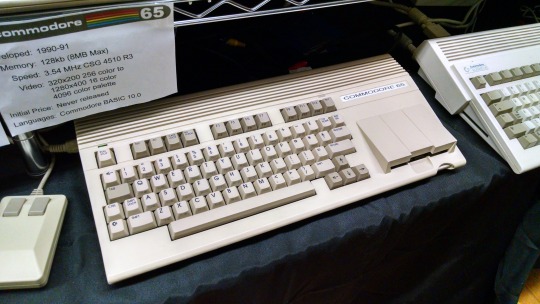
It sits in the pile with the rest of history's pre-production computers that never made it. It's been awhile since I went on a Commodore 65 rant...
The successor to the C64 is the C128, arguably the pinnacle of 8-bit computers. It has 3 modes: native C128 mode with 2MHz 8502, backwards compatible C64 mode, and CP/M mode using a 4MHz Z80. Dual video output in 40-column mode with sprites plus a second output in 80-column mode. Feature-rich BASIC, built in ROM monitor, numpad, 128K of RAM, and of course a SID chip. For 1985, it was one of the last hurrahs of 8-bit computing that wasn't meant to be a budget/bargain bin option.
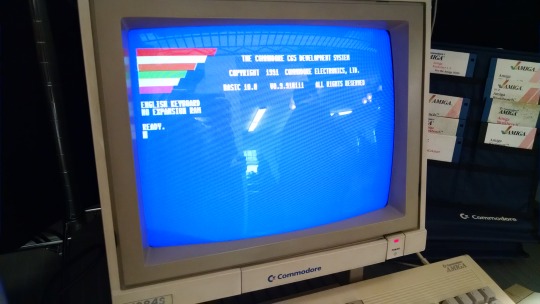
For the Amiga was taking center stage at Commodore -- the 16-bit age is here! And its initial market performance wasn't great, they were having a hard time selling its advanced capabilities. The Amiga platform took time to really build up momentum square in the face of the rising dominance of the IBM PC compatible. And the Amiga lost (don't tell the hardcore Amiga fanboys, they're still in denial).
However, before Commodore went bankrupt in '94, someone planned and designed another successor to the C64. It was supposed to be backwards compatible with C64, while also evolving on that lineage, moving to a CSG 4510 R3 at 3.54MHz (a fancy CMOS 6502 variant based on a subprocessor out of an Amiga serial port card). 128K of RAM (again) supposedly expandable to 1MB, 256X more colors, higher resolution, integrated 3½" floppy not unlike the 1581. Bitplane modes, DAT modes, Blitter modes -- all stuff that at one time was a big deal for rapid graphics operations, but nothing that an Amiga couldn't already do (if you're a C65 expert who isn't mad at me yet, feel free to correct me here).
The problem is that nobody wanted this.
Sure, Apple had released the IIgs in 1986, but that had both the backwards compatibility of an Apple II and a 16-bit 65C816 processor -- not some half-baked 6502 on gas station pills. Plus, by the time the C65 was in heavy development it was 1991. Way too late for the rapidly evolving landscape of the consumer computer market. It would be cancelled later that same year.
I realize that Commodore was also still selling the C64 well into 1994 when they closed up shop, but that was more of a desperation measure to keep cash flowing, even if it was way behind the curve by that point (remember, when the C64 was new it was a powerful, affordable machine for 1982). It was free money on an established product that was cheap to make, whereas the C65 would have been this new and expensive machine to produce and sell that would have been obsolete from the first day it hit store shelves. Never mind the dismal state of Commodore's marketing team post-Tramiel.

Internally, the guy working on the C65 was someone off in the corner who didn't work well with others while 3rd generation Amiga development was underway. The other engineers didn't have much faith in the idea.
The C65 has acquired a hype of "the machine that totally would have saved Commodore, guise!!!!1!11!!!111" -- saved nothing. If you want better what-if's from Commodore, you need to look to the C900 series UNIX machine, or the CLCD. Unlike those machines which only have a handful of surviving examples (like 3 or 4 CLCDs?), the C65 had several hundred, possibly as many as 2000 pre-production units made and sent out to software development houses. However many got out there, no software appears to have surfaced, and only a handful of complete examples of a C65 have entered the hands of collectors. Meaning if you have one, it's probably buggy and you have no software to run on it. Thus, what experience are you recapturing? Vaporware?
The myth of the C65 and what could have been persists nonetheless. I'm aware of 3 modern projects that have tried to take the throne from the Commodore 64, doing many things that sound similar to the Commodore 65.
The Foenix Retro Systems F256K:
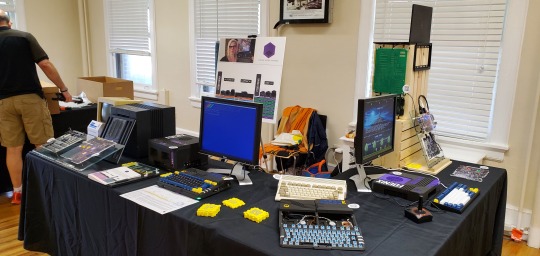
The 8-Bit Guy's Commander X16
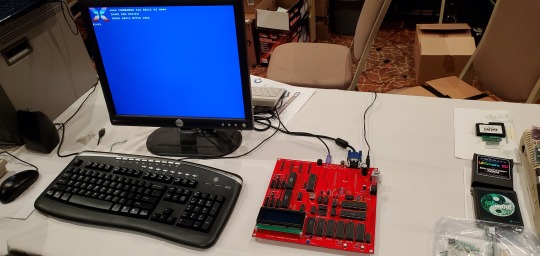
The MEGA65 (not my picture)
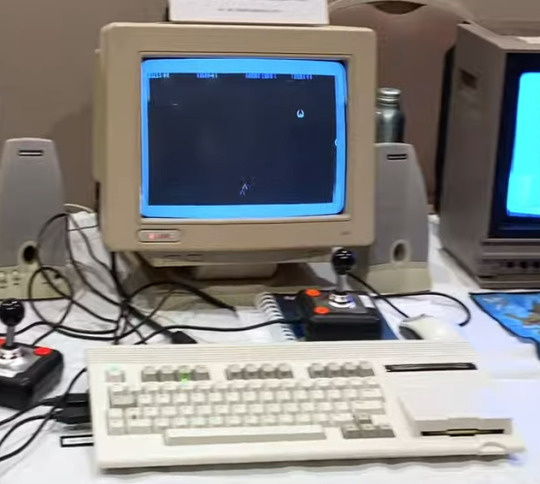
The last of which is an incredibly faithful open-source visual copy of the C65, where as the other projects are one-off's by dedicated individuals (and when referring to the X16, I don't mean David Murray as he's not the one doing the major design work).
I don't mean to belittle the effort people have put forth into such complicated projects, it's just not what I would have built. In 2019, I had the opportunity to meet the 8-Bit Guy and see the early X16 prototype. I didn't really see the appeal, and neither did David see the appeal of my homebrew, the Cactus.
Build your own computer, build a replica computer. I encourage you to build what you want, it can be a rewarding experience. Just remember that the C65 was probably never going to dig Commodore out of the financial hole they had dug for themselves.
262 notes
·
View notes
Text
You may remember my post from a bit ago about a large computer haul, and this is a follow-up of sorts with some new machines I recently got from Ncommander when they were passing through the area.
The first system I want to show is the Kaypro 4. This is my first Z80 machine and my first CP/M machine. I got a boot disk with it, but I'll need to do some work on the floppy drives it looks like - I want to eventually install a Gotek with FlashFloppy.






And for a preview of what the system does when I insert the boot floppy
Next up we have a Pentium system. It's a Pentium 133 and, while I don't know how much RAM it has, it does have a Cirrus Logic video card and some manner of Soundblaster 16 clone it looks like.






And last, but certainly not least, we have a pair of Sun systems - a SPARCstation 5 and an Ultra 1. The SPARCstation 5 has a 70MHz microSPARC-II and 152MB of RAM, meaning it can comfortably run Solaris, one of the BSDs, or (and this is the really cool thing) NeXTstep for SPARC. It also has Sun's CG6 framebuffer installed. The Ultra 1 is a known "cursed" system and sometimes fails to POST. It has a 167MHz UltraSPARC I processor and 64MB of RAM. It doesn't have a framebuffer installed, but it does have two SCSI disks (one bad, one good), and the pair of machines comes with the CG3 that came with the SPARCstation 5 initially.






I plan to get a video made on these acquisitions as soon as I'm able to get my serial cables! I look forward to it. :)
#old tech#retro tech#sun microsystems#unix#old computer#old computers#vintage computers#vintage computer#vintage tech#vintage technology
78 notes
·
View notes
Text
So I did some extensive digging on Sarna, and figured out (roughly) how many WarShips still exist in the non-SLDF navies as of 3152, in canon:
* Lyrans:
LCS Yggdrasil (Mjolnir-class battlecruiser; largest non-SLDF/Clan naval vessel in the Inner Sphere)
LCS Invincible (Tharkad-class battlecruiser; stranded in Tharkad system due to jump drive damage, used as training ship)
* Kuritans:
DCS Draconis Rift (Kyushu-class frigate)
DCS Winds of Heaven (Inazuma-class corvette)
* FedSuns:
FSS Brest (Fox-class corvette; exact status unknown)
FSS Admiral Michael Saille (Fox-class corvette)
* Capellans:
CCS Aleisha Kris (Feng Huang-class)
* FWL:
FWLS Delos (Thera-class carrier)
FWLS Santorini (Thera-class carrier; stranded in Oriente system)
FWLS Menelaus (Agamemnon-class heavy cruiser)
FWLS Galahad (Eagle-class frigate; exact status unknown)
FWLS Lancelot (Eagle-class frigate; exact status unknown)
FWLS Attica (Zechetinu I-class corvette; exact status unknown)
FWLS Haptopoda (Zechetinu II-class corvette; exact status unknown)
* Taurian Concordat:
TCW Vandenburg (Vincent-class corvette; bad case of Kuznetsov Syndrome)
* Calderon Protectorate:
CPS Redemption (Quixote-class frigate)
Just 16 WarShips in the entire Inner Sphere, of which 7 of them are either stranded in one system or have their exact fate unknown as of 3152.
19 notes
·
View notes
Text
On the 25th of June, twenty nine years ago, Super Street Fighter II: The New Challenges was released in Japan for the Super FamiCom and Sega Mega Drive.
It is the fourth game in the Street Fighter II sub-series of Street Fighter games.
It refines and balances the existing character roster from the previous versions, and introduces four new characters. It is the first game on Capcom's CP System II hardware, with more sophisticated graphics and audio over the original CP System hardware used in previous versions of Street Fighter II.

#Street Fighter#Super Street Fighter II#Super Street Fighter II: The New Challengees#Street Fighter II#Fei Long#Cammy#Dee Jay#T. Hawk#Ryu#Cammy White#Thunder Hawk#Video Games#Gaming#Fighting Games#Capcom
12 notes
·
View notes
Text
Captain Save-A-Hisashi rides again!
I don't know if the comment got eaten by the spam filter; or if it was another case of "did not understand my sense of humour"; or if the blogger has fallen into a black hole on the way to Andromeda, but I did actually save the text, and wanted to post it somewhere, in case anyone ever has any response.
{Comment followed a thread where a random googler had asked for explanation of the Greek letters in Buck-Tick's Nostalgia - Vita Mechanicalis. CP responded to the effect of, don't read too much into it, Imai is not very well educated and the whole thing was just a reference to some Steampunk phone game.}
((Further edited to add: yes, it's entirely possible that this is just a reference to a game, and Delta-Iota-Lambda-Xi refers to nothing more complicated than:
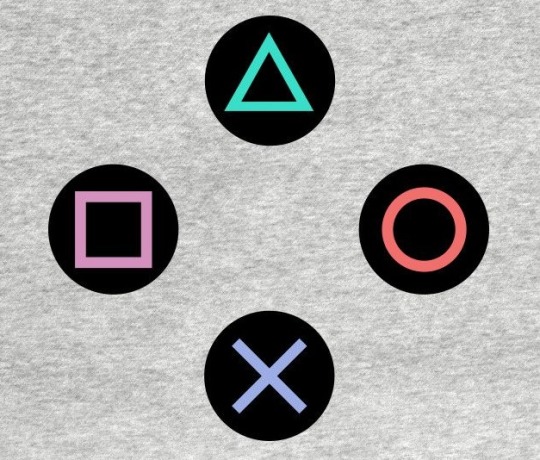
There is indeed both a Delta and a Xi in these characters))
The comment I left in response:
It’s true that Imai is an art school dropout, and his monotropic brain simply cannot hang on to information he doesn’t have an interest in, such as penmanship or random prefectures of Japan. It’s such a SHAME that there is literally no place on Earth or Andromeda where one can come across Greek symbols other than high school maths class!
Chapter 1: amidst the profusion of Imai interviews I’ve absorbed recently, I came across one where our boy mentioned reading James Gleick, so it’s clear he actually does read popular science. (Sorry I can’t footnote it for you, my monotropic brain has never got the hang of footnotes.) Something clicked, as to why the ill-fated tour for Cosmos was named CHAOS: it’s a pun, a synthesis of the “Anarchy” meaning (another long-term preoccupation of Imai, hence the most obvious) and the “complex, self-organising systems” meaning – manifesting in the post-Gleick mid-90s as a pop-science fascination with Fractals. On the chance Imai was fibbing about reading a big book about maths, the ideas popularised by Gleick were widely discussed and heavily used in the fields of Videogame design and Animation – fields Imai has well-known and documented Special Interests in. Knowledge absorbed from pop culture is still knowledge.
Chapter 2: Imai got online in the mid-90s, as documented in his seminal “log off and touch grass” song. What was he arguing about on Usenet? Same things as the rest of us early internet geeks: “Dinosaurs, CT scanners, love, that girl's tooth prints, Klein bottles etc.” Your translation of “いわゆる全てに共通する図形“ is lost, but Google misTranslate is giving me "So-called common-to-all shapes" something that looks suspiciously like set theory or platonic solids? The ~Science Side of Tumblr~. Imai was soaking in it!
Conclusion: living on the net, reading popular science books, imbibing sci-fi, it is not inconceivable that Imai either *does* know the common maths/physics meanings of the Greek symbols he chose; or he lifted them directly from someone who does. (Edited to add: this is the thing; even if he did just lift it from a game; games designers are notorious for adding esoteric references as Easter Eggs. Coming from a game does not mean that it is not meaningful.)
So let’s look at these symbols and see how they link to other common geography of Hisashiland
Δ Delta – this is the easiest one. Delta is the rate of change, usually over time. Everything changes. The only constant over time is change. (The second law of thermodynamics, entropy fans.) ((Edited to add: if I look through my Tumblr archives, I probably can find a long post I made about the relationship between the Second Law of Thermodynamics and Einstuerzende Neubauten's Sehnsucht.))
Ι Iota – the smallest possible amount. How often has Imai referenced scientific words for the concept of the most tiny? Atom Futurist No. 9 (Democritus theorised the Atom – indivisible – as the smallest, infinite, indestructible building block of nature before the Victorians smashed this to pieces with the discovery of the Electron.) Quantum I & II – quantum theory smashed the idea of the smallest building block of nature the way Rutherford smashed the indivisible atom. Iota is another science term for the same thing: the tiny indivisible.
Λ Lambda – the Cosmological Constant. Since the Big Bang, the Universe has been constantly expanding (see section Delta – change!) Lambda is a little mathematical fiddle that Einstein added to the Theory of Relativity to account for the fact that the expansion of the universe is always accelerating. Why? Dark Matter? Dark Energy? This is hotly debated in physics, but in Hisashiland the metaphor of Dark Matter or Dark Energy is repeatedly employed as a necessary corrective for the Blue Sky of conformity.
Ξ Xi – this one was the hardest to crack. At first I thought he’d mis-transliterated the Greek Chi which is the standard mathematical X of the unknown. Xi is the Riemann Function. What’s he about? He’s usually associated with non-Euclidean geometries, surfaces that are impossible outside of multidimensional spaces – moebius strips, Calabi-Yau manifolds (the working model for superstrings, another way of trying to understand where all the extra dark energy/matter is hiding in 10-dimensional space, see Lambda for what Dark Energy means in Hisashiland), and… Klein Bottles, which Imai was getting in flame wars over on the early internet. To understand the true scientific nature of reality, one has to think outside the mosquito net – outside the constraints of the human limitations of three-dimensional perception. In Riemannian maths, dark energy can fold up to hide inside extra dimensions within infinitesimally tiny spaces.
Now these letters may have been chosen stochastically, but all four of them refer to concepts that recur again and again in the hermeneutics of Hisashiland. And one of Gleick’s most profound insights is that randomness isn’t actually that random. Even chaos follows its own cosmological order. Imai may be dirty and strange, but he’s nowhere near as cute-and-dumb as he looks!
#imai mon amour#Nostalgia -Vita Mechanicalis-#things that were in my brain and they are better out of my brain#long post is long
4 notes
·
View notes
Text
#Gamefemerides
Hace 34 años se lanzó Street Fighter II: The World Warrior, también conocido simplemente como Street Fighter II. Es un juego de peleas competitivo desarrollado por Capcom, originalmente para Arcades. Es la 2da entrega de la serie Street Fighter, secuela del original de 1987. Es el 14to título en usar el CP System arcade board. SFII mejoró muchos de los conceptos introducidos en el primer juego, incluyendo el uso de movimientos especiales basados en comandos y una configuración de 6 botones, ofreciendo a los jugadores una mayor selección de personajes jugables, cada uno con su propio estilo de pelea e introduciendo el sistema de combos.
#LegionGamerRD #ElGamingnosune #Videojuegos #Gaming #RetroGaming #RetroGamer #CulturaGaming #CulturaGamer #GamingHistory #HistoriaGaming #GamerDominicano #GamingPodcast #Podcast #Capcom #StreetFighter #StreetFighterII #Arcade #Nintendo #SNES #NintendoSwitch #PlayStation #PS2 #PS3 #PS4 #Microsoft #Xbox #Xbox360 #XboxOne #Peleas
instagram
1 note
·
View note
Text

#Street Fighter Zero 2#ストリートファイター Zero 2#1996#Capcom#カプコン#CP System II#CPS2#90s Fighting Games#fighting games#90s Arcade Game#print ad#video game ad#FGC#magazine scan#90s#1990s#Arcade Gaming#Arcade Game#art#design#color#style#retro gaming#video games#graphic design#logo design#logo#Street Fighter Alpha 2#Alpha 2#Zero 2
38 notes
·
View notes
Video
tumblr
Night Warriors: Darkstalkers’ Revenge (Capcom - CP System II - 1995)
#Night Warriors: Darkstalkers’ Revenge#Night Warriors#Darkstalkers' Revenge#darkstalkers#Felicia#Phobos#fighting games#Huitzil#fighters#capcom#CP System II#zplayz#cat girl#cat girls#monster girl#monster girls#robots#mech#robot#bot
26 notes
·
View notes
Photo
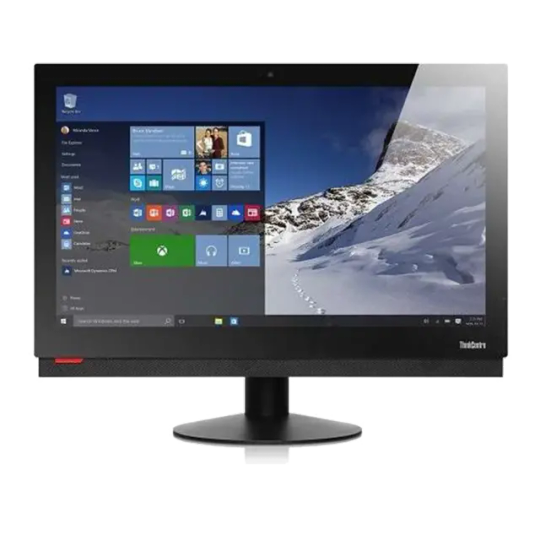
Lenovo ThinkCentre M900z Intel Core i5 6th Gen Stylish. Rugged. Perfect for the Office. The all new M900z AIO comes in a sleek new design that impresses and saves space with its thinner frame. And having passed US military spec testing, it's more rugged than ever. The M900z guarantees powerful performance. Purposefully designed with combined DP in and CP out into one single port you can conveniently switch between laptop, AIO and extended monitor. With other features such as integrated handle for mobility and wide viewing angle, the M900z is an ideal solution for enterprise productivity. Specifications Chassis / Form Factor All-in-one Display / Diagonal Size 23.8 in Display / Diagonal Size (metric) 60.45 cm Display / Native Resolution 1920 x 1080 Display / Type LED Display / Widescreen Display Yes Processor / Chipset Chipset Type: Intel Q170 Clock Speed: 3.2 GHz CPU: Intel Core i5 (6th Gen) 6500 CPU Socket LGA1151 Socket Max Turbo Speed 3.6 GHz Number of Cores Quad-Core Processor Main Features Intel Turbo Boost Technology 2 RAM Configuration Features 8 GB RAM Effective Memory Speed 2133 MHz Features Dual channel memory architecture Form Factor SO-DIMM 260-pin Max: 32 GB Slots 2 (total) / 1 (empty) Technology DDR4 SDRAM Storage Controller Controller Interface Type SATA 6Gb/s Type 1 x SATA Hard Drive / Capacity 500 GB Hard Drive / Interface Serial ATA-600 Networking / Data Link Protocol Bluetooth 4.1 Fast Ethernet Gigabit Ethernet IEEE 802.11a IEEE 802.11ac IEEE 802.11b IEEE 802.11g IEEE 802.11n Networking / Wireless LAN Supported Yes Networking / Wireless Protocol 802.11a/b/g/n/ac Bluetooth 4.1 Optical Storage Optical Storage Type: DVD-Writer Video Output Graphics Processor Intel HD Graphics 530 Audio Output Compliant Standards High-Definition Audio Sound Output Mode Stereo Speakers Included 2 x right / left channel Camera Camera Yes Features Built-in 2 microphones Resolution 1080p Card Reader Type 9 in 1 card reader Expansion / Connectivity Interfaces 6 x USB 3.0 (2 front, 4 rear) 1 x headphones/microphone (1 in front) 1 x DisplayPort input/output combo 1 x LAN (Gigabit Ethernet) General Built-in Devices Stereo speakers Color Business black Embedded Security Trusted Platform Module (TPM 1.2) Security Chip Localization Language: English Platform Technology Intel vPro Platform Product Form Factor All-in-one - with UltraFlex II Stand Graphics Controller Graphics Processor Intel HD Graphics 530 Video Interfaces DisplayPort Input Device Keyboard Interface USB Keyboard Name Preferred Pro USB Localization & Layout US Mouse Interface USB Technology Optical Operating System / Software OS Not provided: Windows 10 Pro 64-bit Edition Power Device Type Power supply Efficiency 85% Power Provided 150 Watt Voltage Required AC 120/230 V (50/60 Hz) No operating system installed
0 notes
Note
What kind of work can be done on a commodore 64 or those other old computers? The tech back then was extremely limited but I keep seeing portable IBMs and such for office guys.
I asked a handful of friends for good examples, and while this isn't an exhaustive list, it should give you a taste.
I'll lean into the Commodore 64 as a baseline for what era to hone in one, let's take a look at 1982 +/-5 years.
A C64 can do home finances, spreadsheets, word processing, some math programming, and all sorts of other other basic productivity work. Games were the big thing you bought a C64 for, but we're not talking about games here -- we're talking about work. I bought one that someone used to write and maintain a local user group newsletter on both a C64C and C128D for years, printing labels and letters with their own home equipment, mailing floppies full of software around, that sorta thing.
IBM PCs eventually became capable of handling computer aided design (CAD) work, along with a bunch of other standard productivity software. The famous AutoCAD was mostly used on this platform, but it began life on S-100 based systems from the 1970s.
Spreadsheets were a really big deal for some platforms. Visicalc was the killer app that the Apple II can credit its initial success with. Many other platforms had clones of Visicalc (and eventually ports) because it was groundbreaking to do that sort of list-based mathematical work so quickly, and so error-free. I can't forget to mention Lotus 1-2-3 on the IBM PC compatibles, a staple of offices for a long time before Microsoft Office dominance.
CP/M machines like Kaypro luggables were an inexpensive way of making a "portable" productivity box, handling some of the lighter tasks mentioned above (as they had no graphics functionality).
The TRS-80 Model 100 was able to do alot of computing (mostly word processing) on nothing but a few AA batteries. They were a staple of field correspondence for newspaper journalists because they had an integrated modem. They're little slabs of computer, but they're awesomely portable, and great for writing on the go. Everyone you hear going nuts over cyberdecks gets that because of the Model 100.
Centurion minicomputers were mostly doing finances and general ledger work for oil companies out of Texas, but were used for all sorts of other comparable work. They were multi-user systems, running several terminals and atleast one printer on one central database. These were not high-performance machines, but entire offices were built around them.
Tandy, Panasonic, Sharp, and other brands of pocket computers were used for things like portable math, credit, loan, etc. calculation for car dealerships. Aircraft calculations, replacing slide rules were one other application available on cassette. These went beyond what a standard pocket calculator could do without a whole lot of extra work.
Even something like the IBM 5340 with an incredibly limited amount of RAM but it could handle tracking a general ledger, accounts receivable, inventory management, storing service orders for your company. Small bank branches uses them because they had peripherals that could handle automatic reading of the magnetic ink used on checks. Boring stuff, but important stuff.
I haven't even mentioned Digital Equipment Corporation, Data General, or a dozen other manufacturers.
I'm curious which portable IBM you were referring to initially.
All of these examples are limited by today's standards, but these were considered standard or even top of the line machines at the time. If you write software to take advantage of the hardware you have, however limited, you can do a surprising amount of work on a computer of that era.
44 notes
·
View notes
Text

Long post! Beware!
Well, let me tell you the story the most important piece of software that nobody really knows about. The Basic Input Output System is a piece of software that comes bundled with the hardware. The first ones were burned [1] into Read Only Memory chips. At boot, the CPU has a specific memory address that it just starts running. The BIOS is that program that it runs.
Basically, as the name suggests, it’s a fairly simple program and it sets up the bridge between the OS and the hardware. Meaning that it sets up the equivalent of a mailbox for all the things to communicate with each other.
This means that you can write a single Operating System and so long as it can speak BIOS, it can run on the dozens of Intel 8080 computers on the market in the early 80s.
Which brings us to the author: Gary Kildall. Gary wrote BIOS for his product CP/M (Control Program for Microcomputers - a term that made sense at the time). CP/M was an OS for the growing home computer market. Computers like the Commodore 64, Apple II, even the first home computer the Altair 88 all booted into BASIC which was a simple programming language. But all these versions were different. If you booted into a program that only dealt with managing files (these didn’t even have directories aka folders ) and launching programs, it would be a lot easier.[2]
For this reason, IBM wanted to buy CP/M. They approached Microsoft as the broker for the deal and for … reasons [3] … they ended up hiring MS to write a clone of it instead. This became PC DOS [4] and the reason Bill Gates was the richest man in the world for a long time.
The BIOS was the thing that stood between the hardware and the software. So if anyone wanted to run DOS on a generic PC clone, they would need a BIOS for that clone. But software is copyrighted, so the few companies that just copied the available code from IBM got sued into oblivion. Until a plucky company called Compaq came up with the “clean room” method. 1 team would read the code and write what it does and a second team would write fresh code based on those specs. This was upheld in court when Big Blue tried to take them down.
At the time IBM and Apple controlled their hardware ecosystem and set the price of access to computing. But freeing the BIOS turned the technology inferior intel based PC into an open platform, which lead to cheaper competitors and the reason that the PC is so dominant.
Modern computers have replaced the BIOS with the Extended Firmware Interface (EFI). People still call it BIOS because few understand what it ever did, but BIOS is dead. Long live BIOS
Footnotes:
[1] Programmable ROM chips are a grid diodes, which let current run in one direction. If you apply enough heat, it will literally burn out the diode so current can’t run in any direction. Apply test voltage on an unburned bit you get that voltage back, a 1. Otherwise the current is blocked and you get a 0. Flash Memory is a distant ancestor of this technology.
[2] remember that this was all done before the home computers could display graphics without dipping into the machine language (Assembly Language- which is different for every type of processor). Thus you typed lines of commands as your interface, a Command Line Interface.
[3] obviously the reasons vary depending on the storyteller, for some Kildall was hardheaded and wanted to retain ownership, for others, there was a miscommunication.
[4] the deal allowed MS to sell their own version of it, MS DOS. This will come up in a sec.
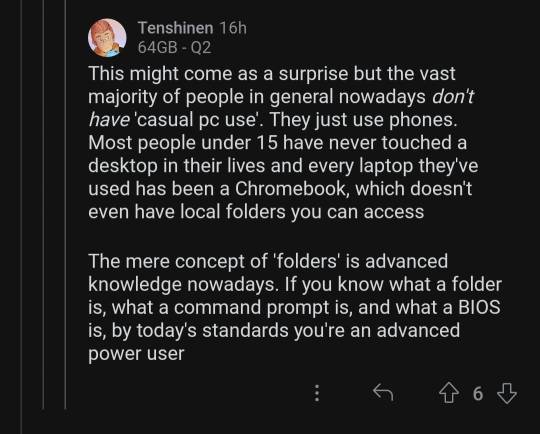
this can't be true can it
99K notes
·
View notes
Text
Organizing and Starting a CSSR Operation

Understanding Collapsed Structure Search and Rescue (CSSR)
A Collapsed Structure Search and Rescue (CSSR) operation is a specialized rescue effort aimed at saving lives during incidents involving the collapse of various types of structures, including reinforced and unreinforced masonry, concrete, tilt-up, and heavy timber constructions. According to the National Fire Protection Association (NFPA) 1670, CSSR operations are crucial for effectively managing and mitigating the risks associated with collapsed structures.
The CSSR Squad: Roles and Responsibilities
A CSSR squad is an integral part of an emergency response system, dedicated to locating, accessing, stabilizing, and extricating victims trapped in collapsed structures. The squad consists of several key positions:
Squad Leader: The Squad Leader is responsible for overseeing the operation. This role involves communicating with the Command Post (CP) or Emergency Operations Center (EOC), receiving and assigning tasks, selecting appropriate tools, monitoring work rotations, and ensuring safety. Additionally, the Squad Leader maintains a log of events and expenditures.
Rescuers: Rescuers execute tasks as directed by the Squad Leader, utilizing tools and equipment safely. They update the Squad Leader on their progress and request necessary resources to complete their tasks.
Logistics Position: This rotating role involves managing tools, equipment, and other resources essential for the operation. Squad members take turns assuming this responsibility.
Phases of a CSSR Operation
Phase I: Preparation (Ongoing, Before Disaster) Preparation is crucial and involves several key actions:
Team Selection and Training: Ensuring that team members are well-trained and prepared for the tasks ahead.
Personal Protective Equipment (PPE): Equipping team members with the necessary protective gear.
Maintenance of Tools and Equipment: Regularly checking and maintaining all tools and equipment to ensure they are in working condition and ready for deployment.
Transportation Arrangements: Making arrangements for transporting the squad and equipment to the disaster site.
Phase II: Activation and Mobilization (Upon Request to Respond) When activated, the CSSR squad undertakes the following steps:
Request Transportation: Arranging transportation to the disaster site.
Pack and Load Equipment: Ensuring all necessary equipment is packed and ready.
Notify Team Members: Informing all team members of the activation.
Obtain Disaster Information: Gathering detailed information about the disaster, including its type, location, magnitude, affected areas, and weather conditions.
Brief Team Members: Providing an update on the situation to the team.
Initial Assessment: Five Steps
Compile Information: On-site, consult with local authorities, gather data, and perform a needs analysis. Confirm and update information from the activation phase.
Establish Command Post: Set up a command post outside the hazardous area.
Set Operational Objectives: Determine general access, strategic planning, priorities, and resource allocation. Manage operations initiated by other organizations if necessary.
Assign Tasks: Allocate specific tasks to rescue squads based on the current situation.
Reassess and Adjust: Continuously reassess the situation and make adjustments as needed.
Phase III: Operations
The Operations Phase is broken down into six stages:
Stage 1: Search and Locate – Implement techniques to detect live victims within the collapsed structure.
Stage 2: Gain Access – Clear debris and create passageways to reach trapped individuals.
Stage 3: Stabilize the Victim – Provide basic life support on-site to improve the chances of survival before transferring the victim to advanced medical care.
Stage 4: Extricate the Patient – Carefully remove the victim from the debris, ensuring no additional harm.
Stage 5: Ensure No Further Injury – Ensure no additional pressure is applied to the victim's body during extraction.
Phase IV: Deactivation and Demobilization
Confirm Completion: Ensure all tasks are completed and no further operations are needed.
Account for Equipment: Check all tools and equipment, pack them for transportation, and confirm that all personal items are accounted for.
Arrange Transportation: Organize transportation for the squad and equipment.
Phase V: Post-Operational Activities
Critical Incident Stress Management (CISM): Address psychological stress experienced by team members.
Medical Examinations: Conduct physical examinations for rescue personnel.
Equipment Rehabilitation: Repair and maintain equipment.
After-Action Report: Prepare a report summarizing the operation for institutional management and review safety practices.
Incident Command System (ICS)
The ICS is a flexible framework for managing resources and personnel during various incidents. It ensures effective coordination by organizing management structures into five core elements: the Incident Commander, Operations Section, Planning Section, Logistics Section, and Finance/Administration Section. The ICS is adaptable for different scales of incidents, from routine emergencies to large-scale disasters.
Incident Commander (IC): The IC oversees the entire incident, assigning resources and managing operations without directly engaging in hands-on tasks.
Incident Command Post (ICP): The ICP is the central location from which the IC manages all incident operations, staffed by section chiefs and support staff.
Scope of Operations
In large-scale emergencies, operations are managed across various levels. The CSSR squad focuses on the immediate work site, while broader coordination is handled by higher administrative levels. Each level of operation plays a crucial role in ensuring effective disaster response and management.
By understanding these phases and roles, and effectively utilizing the ICS, teams can organize and start CSSR operations to efficiently respond to collapsed structure incidents, ensuring that rescue efforts are conducted safely and effectively.
0 notes
Text

after getting to play the ‘marvel vs. capcom fighting collection’ for a few hours over the past two days, i gotta say i really like it. the games are as fun as i remember and in someways even better. i’ve been spending the majority of my time playing ‘x-men’ and ‘x-men vs. street fighter,’ because i love those rosters the most, but i’ll play a bit of the other ones here and there for variety.
that said, after almost twenty years since i last played it, ‘marvel vs capcom 2’ has lost all its luster for me. i find the massive roster ridiculous, being restricted to two punch and two kick buttons instead of the regular three of each for a capcom game limiting, i’m not a fan of the more hectic action and even though the game was for a more advanced sega naomi arcade board, the sprites don’t look anywhere near as crisp or as bright as all the other games which run on capcom’s cp system ii board. compared to any other game in the marvel vs capcom lineup, or compared the street fighter alpha series, mvc2 just doesn’t look good.
all in all though, great collection. it’s worth every penny.
0 notes